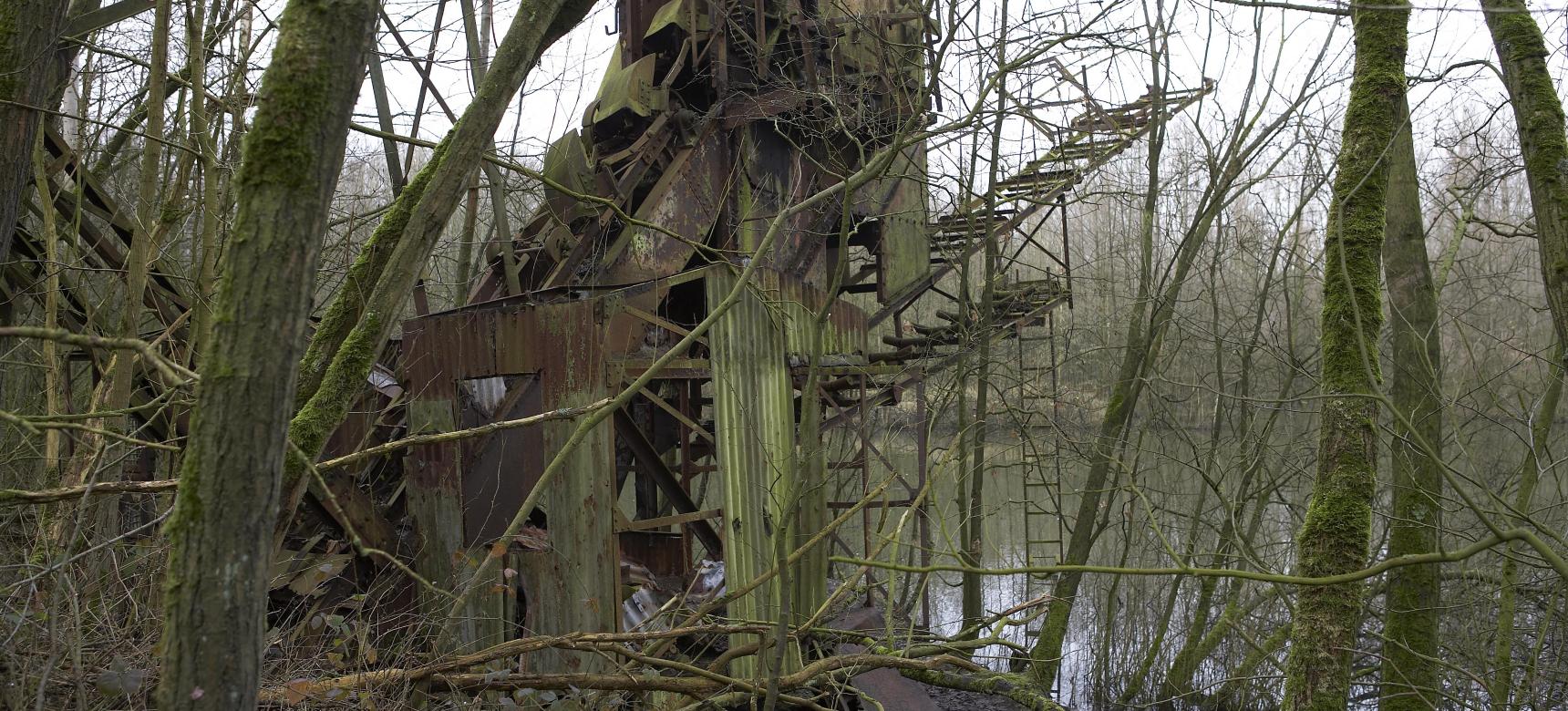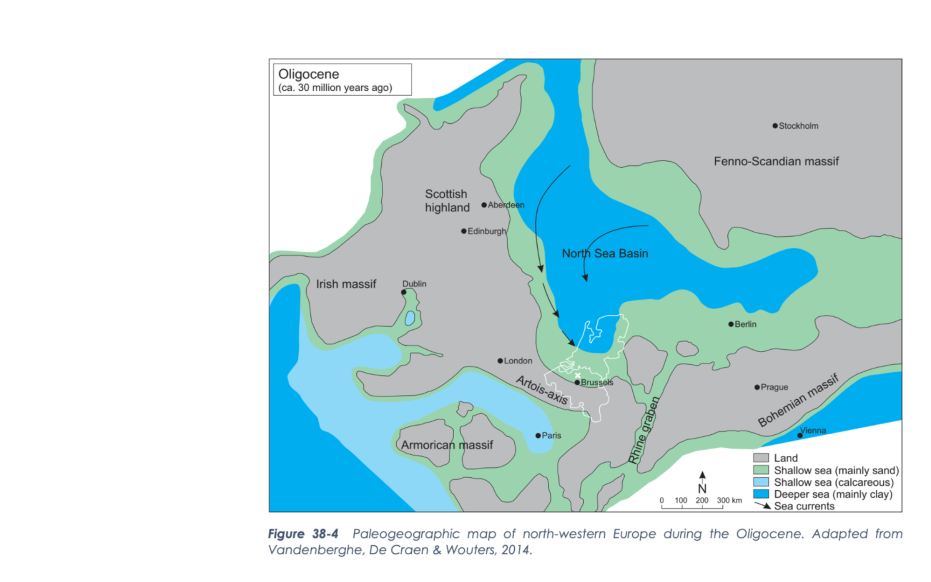Origin of the landscape
Since the Steengelaag originated as a clay mining pit, the geological history of this area requires us to go back to the period when this clay was formed. The formation of the Waasland cuesta started about 32 million years ago. During this period, the Netherlands and northern Belgium were below sea level. In the Oligocene North Sea, sediment was deposited from the erosion of the surrounding continents. The coarser particles ended up mostly close to the coasts. Finer particles settled in the deeper parts of the basin. Between 32 million and 30 million years ago, a period occurred when the sea deposited clay. The water depth fluctuated frequently. As a result, the deposit consists of an alternation of layers with more or less silt, chalk and organic material. The result is the Formation of Boom: a package of clays with a characteristic pattern of horizontal light and dark gray bands.

